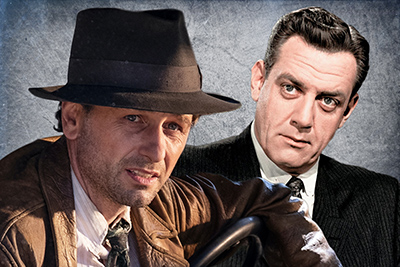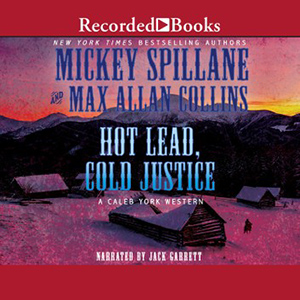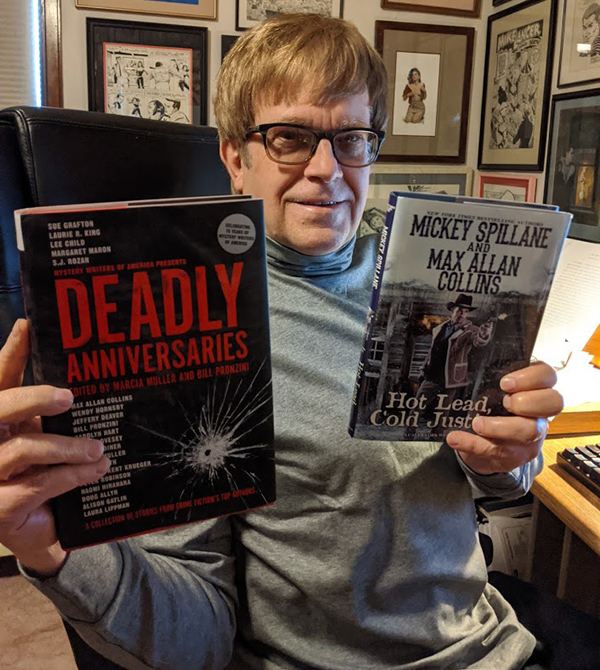
Photos: Everett Collection; Illustration: Dillen Phelps
Perry Mason is back!
What great news for mystery fans! Just think of it – the crackling courtroom scenes with their dramatic on-the-witness-stand confessions. The shrewd defense attorney willing to make the law jump through hoops to clear an innocent client. His tough P.I. associate who tracks down every lead and takes every risk. The loyal beautiful secretary who may, or may not, be having an offstage affair with her boss. The veteran police detective who this time has the goods on the lawyer’s client. The dogged D.A. who is convinced that, finally, he will definitely send Perry Mason’s client to the big house or perhaps even the chair.
And that TV cast – Raymond Burr, understated but smoldering; Barbara Hale, professional but so lovely; William Hopper, handsome and wry; Ray Collins, the Orson Welles player who made something lovable out of crusty Lt. Tragg; and William Talman, the bulldog D.A. who survived even his own marijuana conviction. Nine glorious years it ran (and 22 TV movies with Burr and Hale years later!), and it runs still, entertaining little noirs about love and business and justice.
The best ones were always based on the novels by Erle Stanley Gardner, that self-taught lawyer who cut his teeth in the pulps and went on to rule the slicks and the paperback racks, outsold only by Spillane and Christie, and – like them – under-valued by critics who didn’t know great storytelling when it bit them where they sat. But even those not based on Gardner novels were entertaining, and those scripted by mystery writer Jonathan Latimer were always terrific.
And now he’s back! Perry is back on HBO and he’s not your grandfather’s Perry Mason, boy, or your father’s or your mother’s or…anybody’s.
Look, I believe in taking film and TV adaptations of fiction on their own terms. You may be aware that I am a Spillane fan, yet Kiss Me Deadly (set in L.A., not New York, and designed to make a monkey out of Mickey) is my favorite Mike Hammer movie. I find Road to Perdition in some ways an improvement on my original. I didn’t mind the Quarry series on Cinemax moving my stories from the Midwest to Memphis, and even put up with the humor being drained out of my guy – it wasn’t my version. But they caught the spirit of what I was up to. (And sent checks.) Cool.
However.
This new Perry Mason is a private eye, not a lawyer (at least not yet). He is also a blackmailer and a drunk and a divorced father and generally a depressed sad sack in a studiously rumpled trench coat and shapeless fedora, as well as a tie that we’re reminded several times has an egg stain on it. He exists in a gloomy world where his activities include taking photos of an obese man performing cunnilingus on a starlet (pumpkin pie is involved), and doesn’t that seem right out of Erle Stanley Gardner!
It’s a series that is 50% art direction, 40% cinematography and 10% actors trying not to embarrass themselves. Oh, and there’s a score that consists of random piano chords and jazz-style dirge licks. The first episode establishes that Mason gets along okay with one police detective and exchanges insults with that detective’s partner – you know, like The Maltese Falcon, if The Maltese Falcon sucked.
And who needs Raymond Burr when you have Matthew Rhys to shuffle around feeling sorry for himself, exhibiting all the charisma of a wet sock. Remember how Perry lived on his dead folks’ rundown farm? You don’t? I guess I’m a little fuzzy on that myself. I can tell you the HBO show is set during the Depression, and, brother, does it put the depress in Depression. Of course, if you like dead babies with their eyes sewn shut, you’ve come to the right place.
But there’s diversity the old Perry Mason lacked. Paul Drake (not in the first episode) is an African-American uniformed cop. Mason’s girl friend is an Hispanic airplane pilot who doesn’t seem to like him much (can’t blame her). No, she’s not Della Street – that character is a different lawyer’s secretary. That lawyer is played by John Lithgow who seems to be a man who woke up in somebody else’s dream and is just trying to fit in.
Spare me the news that this is an origin story, and that Mason will evolve into the character we know and once loved. That much evolving even Darwin couldn’t sell.
It’s enough to make me long for Monte Markham.
Do I sound irritated? Well, I feel certain this series will be every bit as popular as the David Soul-starring Casablanca show. Current efforts by a lot of smart people to get Nathan Heller and Mike Hammer on TV will be crippled by this pathetic misfire. All HBO’s Perry Mason will accomplish is to convince TV execs that traditional tough detective shows, particularly, especially, set if in period, are home box-office poison.
Excuse me. I feel the urge to put on my studiously rumpled raincoat and shapeless fedora and go for a walk in the rain. Where did I put my egg-stained tie?
Now I’d like to share with you an essay by Kieran Fisher at Film School Rejects about the Quarry TV show.
to Explore For Cinemax’s ‘Quarry’
The Cinemax series brought Max Allan Collins’ iconic pulpy crime institution to the screen in 2016, but viewers didn’t pay attention to its brilliance at the time.
Most people live boring and mundane lives, meaning that they’ll never become willing participants in the criminal underworld. However, if pop culture’s fascination with crime stories reveals anything, it’s that people are drawn to the dark side when it comes to the entertainment they consume. The allure of this type of storytelling is multifaceted and complex, but sometimes it’s as simple as enjoying the thrills it provides.
Crime-centric entertainment often presents a more nuanced take on criminals as well. How many movies and shows have you watched where you root for protagonists who engage in some very questionable acts? That’s because these characters aren’t always evil to the core. They sometimes have justifiable or understandable reasons for their bad behavior. Such is the nature of Quarry.
Based on Max Allan Collins’ long-running pulp novels of the same name, and created for television by Graham Gordy and Michael D. Fuller, Quarry revolves around Mac (Logan Marshall-Green), a marine who returns to Memphis following the Vietnam War to find that he’s been shunned by society. His wife is having an affair, he can’t find gainful employment, and the press hates him due to his involvement in a village massacre while on duty. Mac then gets into debt with a man called The Broker (Peter Mullan), which leads to him becoming a contract killer.
Needless to say, Mac is a character who can’t catch a break. He just wants a fresh start and a regular life, but he’s forced into an unlawful situation that he doesn’t want to be a part of. Furthermore, he’s haunted by the guilt of his war crimes, having caused the deaths of several innocent women and children. He joined the army to become a hero and left a villain.
One of the most compelling elements of Quarry is Mac’s struggle to figure out who he is, morally and emotionally. He’s a flawed human being who wants to be a better person, but he makes some bad decisions along the way. But his propensity for killing comes naturally. Violence and killing make sense to Mac because he’s good at both, causing him to feel conflicted.
Marshall-Green brings the character to life with aplomb, straddling a fine line between sympathetic antihero and homicidal monster. He boasts the swagger to play a convincing tough guy, but he also displays the emotional range of someone who’s struggling to cope with repressed emotions. He’s also quite charming, which makes for a very layered and well-rounded performance. His charm also makes the character likable, even though you wouldn’t want to bump into this guy on the street.
Of course, another reason why Mac is easy to root for is that his enemies are worse than him. In one episode, a man called Suggs (Kurt Yaeger) — a murderer/potential rapist with a prosthetic leg — kidnaps Mac’s wife in an effort to lure the contract killer to him. Mac’s wife doesn’t deserve his drama, though there’s an argument to be made that her husband’s to blame for all the bad that comes their way. The Broker is also pretty rotten, as he’s essentially forcing Mac to murder people.
Quarry doesn’t hold back when it comes to the violence either. One standout scene sees some poor shmuck get crushed by a car. There are also some gruesome war flashbacks that depict pure horror and brutality. That’s unsurprising considering that the showrunners also wrote some episodes of Rectify, which contains its own fair share of violent moments. And like that show, Quarry is all about that Southern Gothic neo-noir style that’s absolutely intoxicating. The South’s landscapes make for a stunning backdrop to Quarry‘s world of death and mayhem.
The Quarry novels debuted in 1976 and continue to be published to this day. In recent years, Mac’s exploits have even branched off into comic books. There’s an abundance of interesting stories to bring to the screen, and Cinemax canceling this show after eight episodes is a hard pill to swallow. Despite being a constant presence in crime fiction, Quarry screen adaptations are severely lacking.
The books are all over the place and don’t adhere to any set chronological order. However, the general story is that he takes assignments for The Broker before breaking free of his duties. Then he becomes his own man, defending targets from other hitmen (for a small fee, of course). He eventually retires, but he can’t stay out of the game. If the audiences turned up for Quarry when it mattered, it could have lasted for multiple seasons without growing stale.
The series could have taken the chronological approach. The novels haven’t always been released that way, but you can read them in a certain order for a structured approach to the character’s life story. That makes sense for television, too. Still, I love the idea of a Quarry show where seasons bounce around all different timelines.
Fans of Breaking Bad, Banshee, True Detective, and shows of that ilk will enjoy Quarry. It’s pulpier than those shows, but it boasts enough similar sensibilities and stylistic similarities to hang out with them in its own way. It’s just a shame that it never received the opportunity to make a long-lasting impression on viewers.
The great magazine True West has reviewed the new Caleb York, Hot Lead, Cold Justice, right here.
This link is to the definitive interview with me on the subject of the Dick Tracy movie novelization.
Finally, the Mike Hammer mystery, Murder, My Love, has been nominated for the Best Original Novel “Scribe” award. Here is the complete list of nominees.
M.A.C.













